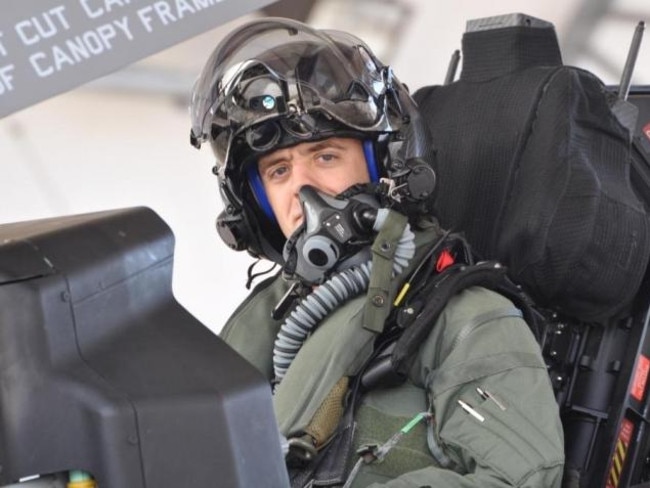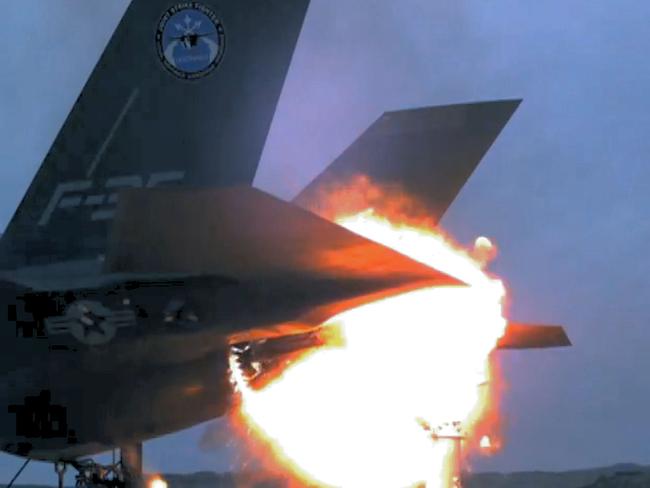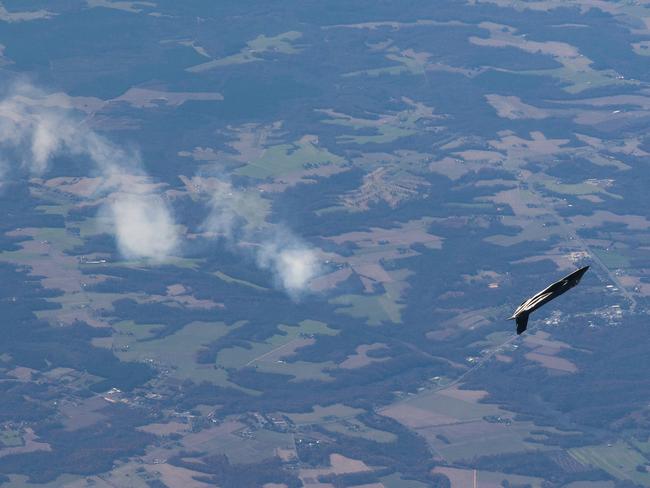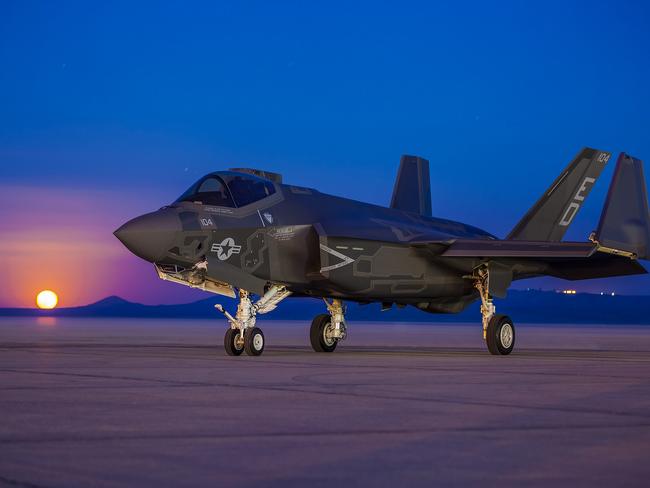F-35 Stealth Fighter: Reports identify safety, reliability, combat risks
AUSTRALIA’S costly future F-35 stealth fighter has a string of unaddressed design problems which present a new problem to contend with: Pilot safety.
RELIABILITY. Manoeuvrability. Vulnerability. Accuracy. Now the US Department of Defense has added another item to its growing list of fears about the F-35 stealth fighter program: Pilot safety.
Reports from the US Department of Defence Inspector General and Director of Operational Test and Evaluation into the controversial F-35 Joint Strike Fighter question the project’s ability to produce an aircraft which is safe to fly — let alone overcome more than 50 issues identified by audit.
Among issues cited are software failures and engine problems, wing design issues and the risk of fire from vulnerable fuel tanks. The aircraft is also at risk of exploding if struck by lightning, another report found.
New Report: F-35 Lightning II Program Quality Assurance and Corrective Action Evaluation http://t.co/9vdHPfZwJr
— DoD InspectorGeneral (@DoD_IG) March 13, 2015The DoD Quality Assurance Assessment, released late last week, states that 21 out of 462 specification requirements were unlikely to be met under the program’s already heavily revised and delayed delivery schedule.
But it’s what those 21 specifications are that raise alarm bells.
“Examples of these 21 requirements included: Maintainability, manoeuvrability, payload requirements, ballistic vulnerability, and ... internal gun accuracy,” the DoD report reads. “However, Lockheed Martin did not consider these 21 requirements as risks and did not handle them in accordance with its risk management process.
The potential damage resulting from procurement fraud extends well beyond financial losses @DeptofDefense pic.twitter.com/YCujjbA2dS
— DoD InspectorGeneral (@DoD_IG) March 18, 2015“As a result, delivered and future aircraft may not satisfy all system capability requirements, and it is unclear to what extent these capabilities will be achieved.”
While aircraft continue to roll off the production lines — including the first of Australia’s batch of 75 F-35As — the need to “fix” these problems is being deferred. This raises the spectre of costly future refits just to make these aircraft viable.
CAPABILITIES QUESTIONED: Does the F-35 stack up against the competition?
“JPO and Lockheed Martin had no further plan ... to establish verifiable capability confirmation criteria for the acceptance of LRIP (early production) aircraft,” the report reads.
Production F-35s currently undergoing evaluation and training are reportedly only available to fly up to twice a week due to safety, maintenance and reliability issues.
Among the issues identified are:

HELMET FAILURES
False alarms presented to pilots through the F-35’s signature “sensor fusion” system which processes and relays the mass of data collected by the fighters sensors and computers into a 3D, 360 degree helmet display have been identified as a safety risk
An Operational Test and Evaluation report shows that a third redesign of the helmet and software had failed to fix the system’s tendency to generate false alarms and false targets.
The #F35's sensors will gather, fuse & share more info than any fighter in history: http://t.co/nTA9tcJ9VA pic.twitter.com/yX4JIbNbL8
— F-35 Lightning II (@thef35) February 20, 2015“Poor stability performance” issues were also raised about the software.
Once the helmet failed, the F-35’s poor “real life” visibility from the cockpit made it virtually impossible for the pilot to maintain situational awareness — particularly with what was happening behind the aircraft.
SOFTWARE STABILITY
Key among the new Department of Defence findings was a lack of quality assessment and auditing of software “fixes” being applied to the stealth fighter’s 30 million lines of code. Items of concern include the aircraft’s ability to navigate, drop bombs, track enemy radar and share data.
VIDEO: Inside the #F35 cockpit with @KITV4: http://t.co/k4xMd9ZdJb pic.twitter.com/t8jZVt1XC3
— F-35 Lightning II (@thef35) March 11, 2015“Because much of the aircraft capability is reliant upon robust software, adequate control of software suppliers is necessary to minimise the risk of accepting defective software that can degrade product performance, reliability, and maintainability,” the report reads.
“Undiscovered software defects could result in performance degradation or even catastrophic failure of aircraft, subsequently resulting in loss of aircraft and death.”

LIVE FIRE DANGER
The Operational Test and Evaluation has found the F-35’s unusual fuel containment system was a risk of “catastrophic fire” — despite recent redesigns intended to address the issue.
Live fire tests “demonstrated the expected cascading damage vulnerability to fuel ingestion, fuel and hydraulic fire, and hydraulic ram events,” the report says.
VIDEO: Learn how ALIS takes #F35 fleet management to new heights: http://t.co/wj0RkI8UMD pic.twitter.com/cPfCQ72Nda
— F-35 Lightning II (@thef35) February 14, 2015Dumped fuel also had a tendency to collect in the aircraft’s structure, creating a fire hazard. The F-35’s unique 270 volt power system added to the likelihood of sparks from faulty maintenance or minor combat damage, the report says.
Lack of protection from electrical storms — believed omitted due to weight concerns — means pilots are instructed not to fly closer than 30kms to approach weather systems.

ENGINE RESTRICTIONS & WING DROP
An engine fire in a production F-35A last year has been linked to flexing in the engine’s structure that caused rubbing on the fan blades. These failed, sparking a catastrophic fire which destroyed the aircraft.
In an effort to reduce damage to engines, all production F-35s have since reportedly been banned from flying faster than the speed of sound, turning harder than three times gravity or conducting fast manoeuvres.
Faces of the #F35: A pilot's perspective on the program: http://t.co/Ko5W1kv6NC pic.twitter.com/9mJbzeSaVx
— F-35 Lightning II (@thef35) March 18, 2015Such high-speed manoeuvres have again been shown to also induce a sudden and unexpected drop and roll in the F-35 to one side. The DoD report highlights this dangerous tendency was identified six year ago.
The DoD report also highlights the vulnerability of the fighter’s single engine to “foreign object debris”. Specifically, the DoD was concerned about waste materials being left inside aircraft during the construction process.
“An ineffective (foreign object) control program could lead to damaged aircraft, degraded performance, catastrophic failure, loss of aircraft, and loss of life,” the report reads.

SERIOUS PROJECT RISK
The US Department of Defence report recommends the risk that F-35 performance requirements may not be met be treated seriously.
It also wants new emphasis placed on the contractual criteria for the acceptance of “all future and fielded aircraft to ensure that aircraft capabilities are verified”.
FUTURE BOMBER: Funding war over new combat jet program
The report was particularly critical of the project’s Quality Assurance Organisation. This “was not independent and not adequately staffed,” the DoD report rules.
“A quality assurance organisation that lacks independence or the inherent authority to enforce quality management requirements may not effectively mitigate cost, schedule, and performance risks to the F-35 Program.”
It take more than advanced electronics & engine thrust to make the #F35 fly: http://t.co/5so8gCX6c7 #AWS15 pic.twitter.com/uVsPvNmR8n
— F-35 Lightning II (@thef35) February 13, 2015The Operational Test and Evaluation report was no less critical: “Overall suitability continues to be less than desired by the Services, and relies heavily on contractor support and unacceptable workarounds.”
In the face of concerns over the delivery date of combat capable F-35s, the US Navy is reportedly actively considering fresh orders of older F/A-18 Super Hornets to prevent production facilities from shutting down. Such facilities will be need to fill any “capability gap” caused by further F-35 delays.
The first combat capable squadron of the F-35 is due to enter service with the US Marines later this year. Ongoing delays may severely restrict this squadron’s ability to fly, yet alone fight.
How to put across technical and tactical issues to the public? I'm risking a hypothetical... http://t.co/Y9weGwagPG pic.twitter.com/KPmRP4JJBL
— Jamie Seidel (@JamieSeidel) March 9, 2015



